![]()
Shekinah, She Who Dwells within
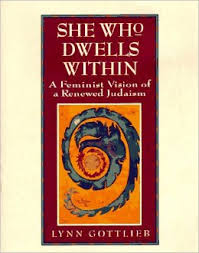
"The term Shekinah is an abstract noun of feminine gender derived from the Hebrew root Sh-Kh-N , meaning 'to dwell' or 'to abide.' The word Shekinah first appears in the Mishnah and Talmud (c.a. 200 C.E.), where it is used interchangeably with YHVH and Elohim as names of God. (p.21) Shekinah evolved from the word Mishkan, which refers to the tent the Israelites constructed in the wilderness to house the altar, the seven-branched menorah, the stone tablets, and the twelve loaves of bread baked as an offering to God. After the Israelites received the Torah, they were instructed to build the Mishkan, 'So I can dwell among you.' When the shrine was completed, YHVH appeared to the people as a cloud of light indicating His Presence.”
A Brief History of Shekinah, She Who Dwells within
"God is always referred to as 'He' in the Masculine Gender. The feminine gender is not used because God is an active force in the universe.'
Aryeh Kaplan, 'The Handbook of Jewish Thought'
THE POETIC IMAGE of YHVH giving birth satisfied a hunger I had not been consciously aware of. Still, could a Jewish God become a woman giving birth? Was it really possible to pray to a feminine YHVH? Could 'She' authentically be part of a religion that seemed to allow only the masculine metaphor?
Soon after my acknowledgment of the need to seek the feminine face of God, I was introduced to kabbalistic and hasidic texts by members of the New York and Boston Havurot (a religious community of peers). (p.20) Lo and behold! The 'Goddess' was alive and well in the midst of my own tradition.
As it is written in the twelfth-century mystical text known as the Zohar, 'Thou shalt have no other gods before Me. Said R. Isaac, 'This prohibition of other gods does not include the Shekinah' ' (Zohar, 86a)
Shekinah, the feminine Presence of God, is a central metaphor of divinity in Jewish mystical and midrashic texts from the first millennium C.E. onward. I was amazed to discover this focus on the feminine divine when I began to read the texts myself. I felt like an orphan who uncovered documents that proved her mother was not dead. All the ambivalence about 'God She' was replaced with the fervor of an explorer who has just been given the right treasure map.
I plunged into the stacks of the Jewish Theological Seminary library and began hounding my teachers for information about my newly discovered relative. Who was She? Where did She live? Would She speak to me in a language I could understand?
What I found was both inspiring and disappointing. To begin with, everything written about the Shekinah appears to have been authored by men. Women's relationship to the Shekinah is nowhere recorded. Yet much of the material about the Shekinah seems to draw from that vast wellspring of the human unconscious that formulates images in archetypes even as it draws upon specific cultural influences.
The idea of Shekinah in Jewish tradition testifies to the basic human impulse to express the experience of the numinous through symbols that include the 'feminine'. Kabbalistic works that describe the Shekinah may incorporate aspects of women's experience in implicit ways. Without women's voices interpreting and composing Shekinah texts for themselves, however, we can never fully grasp women's experience of the divine.
The term Shekinah is an abstract noun of feminine gender derived from the Hebrew root Sh-Kh-N , meaning 'to dwell' or 'to abide.' The word Shekinah first appears in the Mishnah and Talmud (c.a. 200 C.E.), where it is used interchangeably with YHVH and Elohim as names of God. (p.21) Shekinah evolved from the word Mishkan, which refers to the tent the Israelites constructed in the wilderness to house the altar, the seven-branched menorah, the stone tablets, and the twelve loaves of bread baked as an offering to God. After the Israelites received the Torah, they were instructed to build the Mishkan, 'So I can dwell among you.' When the shrine was completed, YHVH appeared to the people as a cloud of light indicating His Presence.
The destruction of the first Temple in Jerusalem in 586 B.C.E. by the Babylonians resulted in the first exile of the Jewish people and engendered a crisis of faith. The Israelites wondered whether God's Presence, which had previously dwelled in the Temple, would continue to abide in their exile. Ultimately that concern was answered in the affirmative. God's abiding Presence, formerly represented as a cloud of glory, became known as the Shekinah. The Shekinah was said to accompany the people into exile and would appear to them whenever the people occupied themselves with the study of Torah or performed good deeds. Although the Temple was destroyed, ritual and the behavior of the people became the new dwelling place for God's Presence.
Over time, the biblical themes of exile and redemption and the historical experience of the Jewish people under Roman and Christian Europe continued to shape the meaning of Shekinah. Women's role as professional mourners and the midrashic image of Israel as God's marriage partner were particularly influential in the evolution of Shekinah into a feminine aspect of God. By 1000 C.E., the very mythologies so suppressed in the Bible erupted in the heart of Jewish mysticism, known as the kabbalah, and Shekinah became YHVH's wife, lover, and daughter.
Kabbalists conceive of God in Neoplatonic terms, as a dynamic complex of ten energies or spheres that emanate from a hidden and unknowable Source. The whole system is known as the Tree of Life. The divine spheres represent the hidden and inner life of God, which becomes manifest in the material world of existence through the medium of the Shekinah. However, the Shekinah occupies the bottom rung of the hierarchical chain of divine emanations.”
Lynn Gottlieb, 'She Who Dwells within', p.19-21
HarperCollins Publishers, 10 East 53rd Street, New York, 1995
.jpg)
The Paraclete Shri Mataji “Many people have no idea as to what to expect and also they are quite naive about the structure or the nature of this Tree of Life which is built within us. Now what I'm going to tell you is the Knowledge of the Roots. So far with our developments we only know the Knowledge of the Tree, but we have to know the Knowledge of the Roots which sustains this tree. If we do not know that Knowledge, it may be one day this great tree that we see which seems to be quite secure, may completely be destroyed. So it is important for everyone to have that Knowledge of the Roots within ourselves and within our society, within human beings as a whole.
Now we have to realise that we have come to this state of human awareness up to a point where we find we are lost. These days in the modern times, we are very much confused because there are so many ideas afloat. All these ideas confuse us and we don't know where to look, what to see, the value systems have changed rapidly so drastically that it is difficult for us to keep up and cope with it. Despite all that, it seems that there must be some hope for us: after all God, God who has created this Universe must be worried about this creation. After all, He has to do something about it. it's no use only our worrying about it, or being aware of the shocks, the future shocks that we may receive because of the mistakes we have committed before. It is He who has made us and it is He who works out everything for us. For example, we believe that we do this and we do that. What we do is the work of the dead to the dead. We do not do any living work. We cannot transform one flower into a fruit.
But you see in different seasons we find different types of flowers, different types of fruits coming in, we find every child that is born has something to do with the society, with the parents, with the country where it is born, it is such a big selection that it is impossible to find out who could have done it with such tremendous powers of accuracy. A child is conceived in a Mother's womb, is a very big miracle itself to all the medical science because normally everything that is foreign is thrown out of the body-but when the foetus is formed in the body, it is not thrown out, on the contrary it is preserved, looked after, nourished and thrown out at the time when it is fully matured. This is such a remarkable thing that we see everyday, but somehow or other we take everything for granted.
Human beings if they look at themselves, they'll be amazed how beautifully we are made. This is something special about us. We know so many things more than the animals do. An animal can pass through a dirty lane, he cannot understand any architecture, he cannot understand any colours, any beauty, but we human beings have so many ideas and also abstract ideas. But beyond this is a state where you reach into an absolute state-so far still we live in a relative world. Whatever we know is so relative that it is difficult to decide really what is right and what is wrong. Relatively we can say alright, this is little right and this is little wrong. But we cannot absolutely say that this is right and this is wrong. Here then we start thinking-ate we really fully evolved? We are not. We are not evolved. And when I say this you should take it as an hypothesis with a very open mind of a scientist. And then if it is proved you have to accept it as a law, not before that.
It is very hard to believe that we can become the Spirit. This is one of the big myths of modern times and many a times when I speak about becoming the Spirit people say that -how can you say like that, how can it be that easy-but it is a living process of our evolution and if it is done by the power. of a living God, then it has to be very simple, has to be very easy-like if you have to sprout a seed you just Put it in the Mother Earth, and the seed has a capacity to become the plant and the Mother Earth has a capacity to sprout it. In the same way, this happening has to take place.
Today that time has come. That time has come, the time of judgement has come and at this time we have to see that we'll be judging ourselves, but not by some sort of a weight or some sort of an authority, but by something which is within us which we call as the Kundalini:, is placed in the triangular bone called as sacrum. Just see, Greeks knew about it, that's why they called this bone as sacrum. But what is this bone in the biblical understanding-it is the reflection of the Holy Ghost.
We have to understand that if there is a Father God and a Son-there has to be a Mother. So this is the primordial Mother who is the Holy Ghost and She is reflected within us as the Kundalini. In our heart is reflected the God Almighty. It is He who is the witness of whatever we are doing. This power manifests everything within us and then resides in a sleeping state in that triangular bone and is said to be residual because it has not yet manifested itself. This is the power of our desire which is true and the only desire we have which is pure. Because all other desires are not true. If they were true, any one of them when satisfied, we would not have desired for anything else. But it is not so as you know in economics that wants in general are not satiable. So you want to have something today, then we want to have another thing tomorrow.
But once the desire of becoming one with the Divine manifests then you don't want anything-you want to give. Like you want to be the light and then you become the light that emits light and emancipates others -raises them to the level of their Spirit by giving them peace and bliss. Today we talk of peace. But how can we have peace with the people who are so disturbed. We have to have transformation of human beings, who should feel peaceful within themselves and should feel that they are the ones who are part and parcel of the whole. But this should not be a conception or a mental projection. Because mental projection can disappear in no time. Like you would believe that this particular person is my friend but you discover that he is not and the whole mental projection drops out.
So all mental projections are artificial, they last for a short time and disappear. But this is a happening that has to take place within us when we become the Spirit. It is the question of you feeling that Spirit on your central nervous system. So in our evolutionary process whatever happened to us has happened to our central nervous system, and that is what Christ has exactly said when he said you are to be born again. He didn't say that you just ask somebody to do an exercise of putting some water on top of your head and then say now you are baptised. No. There is a true baptism of the real awakening of this Kundalini passing through these six centres above, piercing through your fontanel bone area and giving you the true experience of the breeze of the Holy Ghost coming out of your own head and this cannot be by just putting water by somebody. It has to happen within yourself and you have to seek the truth, and not something that just satisfies you for the time being.
That's why even if you profess any religion we find we don't have much transformation within. But here you become the Spirit, the fight of the Spirit we can say, on our central nervous system just guides you. Like first of all when this Kundalini rises She passes through these centres on the physical level and you get physical health. Some people say, "Mother, you heal us or cure us'—is not true. It is your own Kundalini. it's your own Mother within you.
Everybody has an individual Mother. When She rises, She actually fulfils the need of every subtle centre that supplies to your gross centres, because these are the abstract or we can say are the subtle centres which are first fulfilled and they look after your plexuses, that's how you get heated automatically. It is you who heal yourself, not me. I'm just a catalyst you can say, like one enlightened light can enlighten another one , and once you are enlightened, you can enlighten another person. That is how it is.”
The Paraclete Shri Mataji
Cardiff, U.K.—April 8, 1984
Apokalypsis: The fulfillment of eschatological instruction by the Paraclete in the Age to Come promised by Jesus at the Last Supper
An apocalypse (Greek: apokalypsis meaning “an uncovering”) is in religious contexts knowledge or revelation, a disclosure of something hidden, “a vision of heavenly secrets that can make sense of earthly realities.” (Ehrman 2014, 59)
“An apocalypse (Ancient Greek: apokalypsis ... literally meaning "an uncovering") is a disclosure or revelation of great knowledge. In religious and occult concepts, an apocalypse usually discloses something very important that was hidden or provides what Bart Ehrman has termed, "A vision of heavenly secrets that can make sense of earthly realities". Historically, the term has a heavy religious connotation as commonly seen in the prophetic revelations of eschatology obtained through dreams or spiritual visions.” Wikipedia 2021-01-09

Total number of recorded talks 3058: Public Programs 1178, Pujas 651, and other (private conversations) 1249
“The Paraclete will come (15:26; 16:7, 8, 13) as Jesus has come into the world (5:43; 16:28; 18:37)... The Paraclete will take the things of Christ (the things that are mine, ek tou emou) and declare them (16:14-15). Bishop Fison describes the humility of the Spirit, 'The true Holy Spirit of God does not advertise Herself: She effaces Herself and advertises Jesus.' ...
It is by the outgoing activity of the Spirit that the divine life communicates itself in and to the creation. The Spirit is God-in-relations. The Paraclete is the divine self-expression which will be and abide with you, and be in you (14:16-17). The Spirit's work is described in terms of utterance: teach you, didasko (14:26), remind you, hypomimnesko (14:26), testify, martyro (15:26), prove wrong, elencho (16:8), guide into truth, hodego (16:13), speak, laleo (16:13, twice), declare, anangello (16:13, 14, 15). The johannine terms describe verbal actions which intend a response in others who will receive (lambano), see (theoreo), or know (ginosko) the Spirit. Such speech-terms link the Spirit with the divine Word. The Spirit's initiatives imply God's personal engagement with humanity. The Spirit comes to be with others; the teaching Spirit implies a community of learners; forgetful persons need a prompter to remind them; one testifies expecting heed to be paid; one speaks and declares in order to be heard. The articulate Spirit is the correlative of the listening, Spirit-informed community.
The final Paraclete passage closes with a threefold repetition of the verb she will declare (anangello), 16:13-15. The Spirit will declare the things that are to come (v.13), and she will declare what is Christ's (vv. 14, 15). The things of Christ are a message that must be heralded...
The intention of the Spirit of truth is the restoration of an alienated, deceived humanity... The teaching role of the Paraclete tends to be remembered as a major emphasis of the Farewell Discourses, yet only 14:26 says She will teach you all things. (Teaching is, however, implied when 16:13-15 says that the Spirit will guide you into all truth, and will speak and declare.) Franz Mussner remarks that the word used in 14:26, didaskein, "means literally 'teach, instruct,' but in John it nearly always means to reveal.” (Stevick 2011, 292-7)
The Holy Spirit as feminine: Early Christian testimonies and their interpretation,
Johannes van Oort, Radboud University, Nijmegen, The Netherlands
Department of Church History and Church Polity, Faculty of Theology, University of Pretoria, South Africa
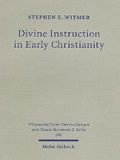
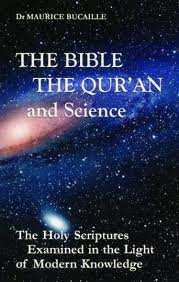
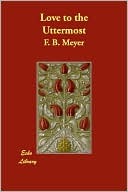
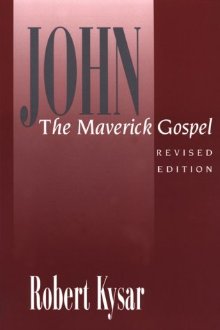
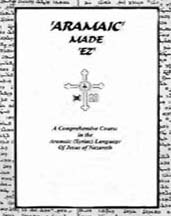
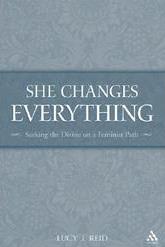
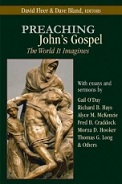

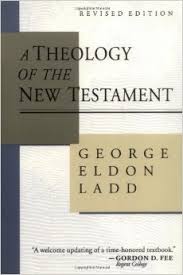
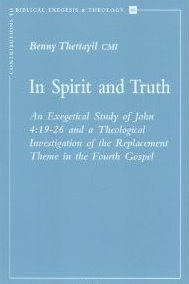


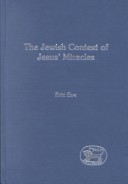
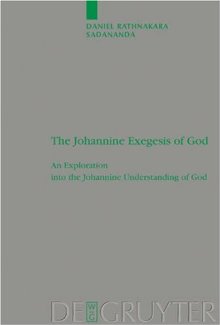

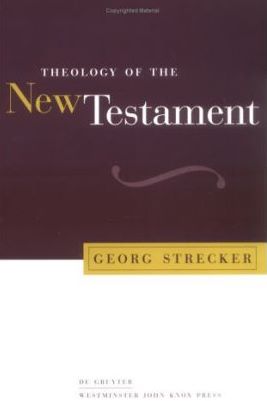
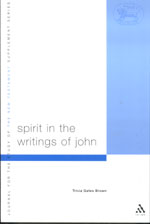
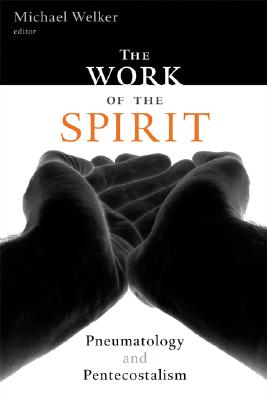
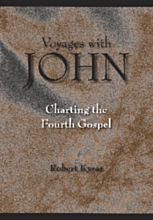


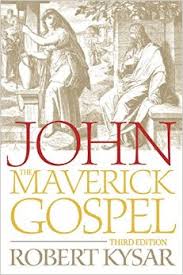
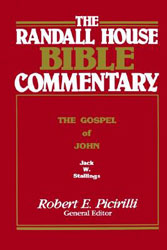
 “The teaching of the Paraclete, as the continuation of Jesus' teaching, must also be understood as the fulfillment of the promise of eschatological divine instruction.”
“The teaching of the Paraclete, as the continuation of Jesus' teaching, must also be understood as the fulfillment of the promise of eschatological divine instruction.”Stephen E. Witmer, Divine instruction in Early Christianity
“Jesus therefore predicts that God will later send a human being to Earth to take up the role defined by John .i.e. to be a prophet who hears God's words and repeats his message to man.”
M. Bucaille, The Bible, the Qur'n, and Science
“And when Jesus foreannounced another Comforter, He must have intended a Person as distinct and helpful as He had been.”
F. B. Meyer, Love to the Utmost
“The Paraclete has a twofold function: to communicate Christ to believers and, to put the world on trial.”
Robert Kysar, John The Meverick Gospel
“But She—the Spirit, the Paraclete...—will teach you everything.”
Danny Mahar, Aramaic Made EZ)
“Grammatical nonsense but evidence of the theological desire to defeminize the Divine.”
Lucy Reid, She Changes Everything
“The functions of the Paraclete spelled out in verses 13-15... are all acts of open and bold speaking in the highest degree.”
David Fleer, Preaching John's Gospel
“The reaction of the world to the Paraclete will be much the same as the world's reaction was to Jesus.”
Berard L. Marthaler, The Creed: The Apostolic Faith in Contemporary Theology
Bultmann calls the “coming of the Redeemer an 'eschatological event,' 'the turning-point of the ages.”
G. Ladd, A Theology of the New Testament
“The Paraclete equated with the Holy Spirit, is the only mediator of the word of the exalted Christ.”
Benny Thettayil, In Spirit and Truth
“The divine Paraclete, and no lessor agency, must show the world how wrong it was about him who was in the right.”
Daniel B. Stevick , Jesus and His Own: A Commentary on John 13-17
Stephen Smalley asserts that “The Spirit-Paraclete ... in John's Gospel is understood as personal, indeed, as a person.”
Marianne Thompson, The God of the Gospel of John
“The Messiah will come and the great age of salvation will dawn (for the pious).”
Eric Eve, The Jewish context of Jesus' Miracles
“The remembrance is to relive and re-enact the Christ event, to bring about new eschatological decision in time and space.”
Daniel Rathnakara Sadananda, The Johannine Exegesis of God
“The Spirit acts in such an international situation as the revealer of 'judgment' on the powers that rule the world.”
Michael Welker, God the Spirit
The Paraclete's “Appearance means that sin, righteousness, and judgment will be revealed.”
Georg Strecker, Theology of the New Testament
“While the Spirit-Paraclete is the true broker, the brokers they rely on are impostors.”
T. G. Brown, Spirit in the writings of John
“The pneumatological activity ... of the Paraclete ... may most helpfully be considered in terms of the salvific working of the hidden Spirit.”
Michael Welker, The work of the Spirit
“The pneuma is the peculiar power by which the word becomes the words of eternal life.”
Robert Kysar, Voyages with John
“The gift of peace, therefore, is intimately associated with the gift of the Spirit-Paraclete.”
Francis J. Moloney, The Gospel of John
“This utopian hope, even when modestly expressed, links Jesus and the prophets to a much wider history of human longing.”
Harvey Cox, The Future of Faith
“Because of the presence of the Paraclete in the life of the believer, the blessings of the end-times—the eschaton—are already present.”
Robert Kysar, John
“They are going, by the Holy Spirit's power, to be part of the greatest miracle of all, bringing men to salvation.”
R. Picirilli, The Randall House Bible Commentary
“The Kingdom of God stands as a comprehensive term for all that the messianic salvation included... is something to be sought here and now (Mt. 6:33) and to be received as children receive a gift (Mk. 10:15 = Lk. 18:16-17).”
G. Ladd, A Theology of the New Testament
Disclaimer: Our material may be copied, printed and distributed by referring to this site. This site also contains copyrighted material the use of which has not always been specifically authorized by the copyright owner. We are making such material available to our readers under the education and research provisions of "fair use" in an effort to advance freedom of inquiry for a better understanding of religious, spiritual and inter-faith issues. The material on this site is distributed without profit. If you wish to use copyrighted material for purposes other than “fair use” you must request permission from the copyright owner.